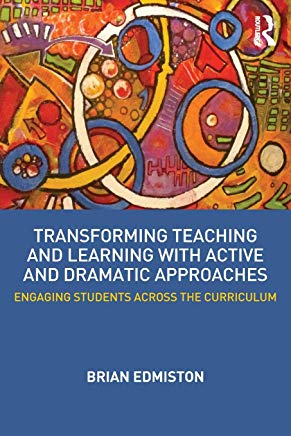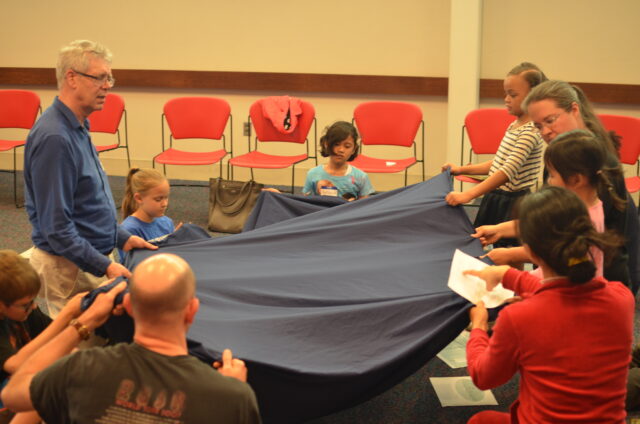Book Review: Transforming teaching and learning with active and dramatic approaches (2013)
By Irfan Rifai
The “ transforming teaching and learning with active and dramatic approaches”, is the latest book written by one of Ohio State University’s scholars who is known for his passionate approach in teaching, Dr. Brian Edmiston. Dramatic inquiry is the inquiry-based pedagogy that relies on dramatic strategies and fuelled by inquiry-based questions in the interactions. The book is the 4th book that he wrote on dramatic inquiry. The first three books that he has written were Imagining to learn ( 1998, co-authored with Wilhelm, J.); Forming Ethical Identities in Early Childhood Play ( 2008) ; Literacy Tools in the Classroom: Teaching through Critical Inquiry, Grades 5-12 ( 2010, Co-authored with Beach, R., Campano, G., & Borgman, M).
Published in 2014, the book talks about Dr. Edmiston’s experiences in using dramatic inquiry to teach different level of students ( kindergarten kids up to preservice, in-service teachers) , his reflections on those experiences, and the practical suggestions that teachers can use in the classroom . The book offers a comprehensive view on the concepts of dramatic inquiry, as well as details of classroom’s executions. It also challenge teachers to transform their teaching in at least two ways : first, to leave the superficial teaching like teaching comprehension as outcome , and second, to move beyond study for the test approach of teaching. On the preface part of the book, the writer was clear in expressing his objective of writing the book : “ I want students to go beyond superficial learning to create depth of understanding of whatever information, skills, or ideas we explore and apply from any given texts or curriculum” (xviii).
The book is structured in a way that readers can jump from one chapter to any chapter without losing the connection to the main idea , concept, and the practicality of the book’s content. The book consists of 7 chapters. In the first chapter, Dr. Edmiston put a strong theoretical foundations and arguments on drama, dialog, and their influences on students’ learning. On the second chapter, he stresses on the issue of building community. In this part of the chapter, he provides practical tips for teachers in building a senses of community prior to ‘doing’ dramatic inquiry, followed by the third chapter, which provides a planning scheme for teacher before implementing dramatic inquiry in her class. The next chapter discusses the concepts and the practical ways of involving authenticity and critical inquiry in teaching. In this chapter, a number of the writer’s empirical cases are used as samples to reflect on the practices. Chapter five puts the phrase ‘ transform teaching’ in the chapter’s title that covers ‘ strategies and tactics’ as well as ‘ improvisation, authorship, and improvisation’ in teaching. The next chapter offers conceptual background and tips for teachers in making assessment based on students’ meaning – making that happens during an ongoing dialogs. The last chapter is the shortest chapter of the seven. Yet, it has the strongest message. In this chapter, he expects that teachers transform themselves by embracing the complexity and the simplicity of dramatic pedagogy.
Dr. Edmiston showed breadth and depth of conceptual thoughts on writing the book. He mentioned major theorists of different / distinctive disciplines like psychology, anthropology, and drama in education who help influence his thoughts on the idea. In this book, he mentioned that he was much influenced by the likes of Bakhtin, Vyogtsky , Holland, and other sociocultural theory scholars. [to be continued in part 2]



 A dramatic inquiry session with Dr. Edmiston (photo is personal collection of the author of this article)
A dramatic inquiry session with Dr. Edmiston (photo is personal collection of the author of this article)
Comments :